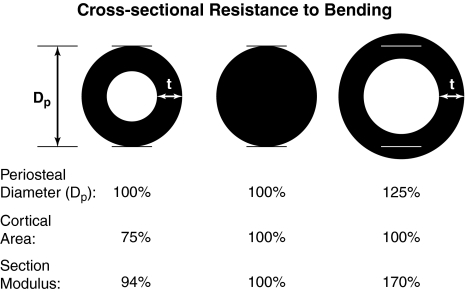Fig. 3.
Variations in the size and distribution of bone mass in a cortical cross-section influence the section modulus, which is proportional to the bending failure strength of the whole bone. Bone resorption on the endosteal surface or apposition on the periosteal surface will change the cortical thickness (t) or the distribution of bone about the loading axis, thereby altering the ability of the bone to resist fracture. For example, compared with the reference bone (center), a bone of the same girth but with 25% less material in its core (left) will be only 6% weaker, but a bone with the same amount of material distributed further away from the bending plane of the bone (right) will be 70% stronger.

